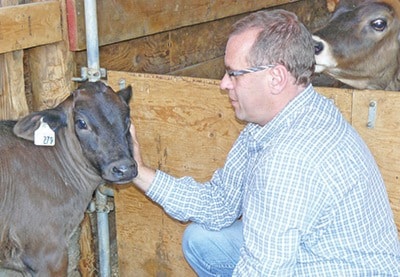As the United States suffers from the worst drought in decades, the impacts are starting to be felt by mid-Island agricultural producers.
That’s because the price of corn and other animal feed has spiked dramatically due to crops withering across many of the key agricultural areas of the U.S., which accounts for 40 per cent of world corn production and 35 per cent of soybean production. The price of corn has risen by a whopping 45 per cent over the summer.
Jenny McLeod, who serves on the board of the District A (Vancouver Island) Farmers Institute, said the drought — which has also been experienced in some key areas in Canada — comes as big hit, making it increasingly difficult for small operators to thrive — and most farms on Vancouver Island fit into that category.
“The more we see of these crises of weather and crop failure, the harder it is for small operators,” she said. “They are at the mercy of the market. A lot of farmers on Vancouver island do grow a lot of their own feed but they have to buy feed in the winter time. It will impact dairy cattle in particular.”
Although she said it is common for the price of meat to rise when the cost of feed rises, little if any of that price rise goes to the producers. Rather, she said, it goes to the middlemen.
“Farmers are getting hardly any more for their beef than they were getting during the Great Depression,” she said.
“Even though the price has also increased — and those costs are paid by the farmer, not the producer.”
Dirk Keller of Sloping Hill Farm is one of the local producers who has been hit by the spike in feed prices.
“It’s tough to make a living,” he said. “Everybody is hit hard. Feed has gone up by roughly $90 per ton. We’re paying more for our feed without increasing the price of our product. There’s nothing you can do except sit it out and live with a low profit or a loss.”
Keller said he doesn’t feed corn to his livestock, but rather, legumes. Because of this, he isn’t impacted as severely as other producers, but he’s not the only one who made the switch, so the price of legumes is also starting to spike.
Whiskey Creek egg and chicken producer Evelyn Gilmar said her chicken feed costs have risen, but she’s able to compensate.
“Feed costs are going up a lot and we are wondering about that,” she said. “I’m paying $12.50 now and four years ago I was paying $8. It went up 40 cents here two months ago, which is quite a hike. However, I am able to just put up the price of my eggs. I can keep doing that until people can’t afford to pay it and I can’t afford to do it anymore.”
Wayne Osborne of Omega Blue Farms said he doesn’t feed corn to his organic flock of turkeys and chickens, but he expects to be hit as well.
“I expected my wheat prices to go up and it has gone up four per cent,” he said. “However, compared to diesel prices, it’s a pittance so far.”
Clarke Gourlay of Morningstar Farm said he also uses alternate feed for his animals, notably barley. However, that, too is increasing in price.
In response, he said he has the option of simply feeding his cattle less barley in order to compensate, noting his animals are mainly grass-fed.
McLeod said if feed prices continue to rise, Vancouver Island could see some small farms going under.
“We have already seen producers dropping out of the meat industry because of the regulations and we are facing the potential of more farms going under,” she said. “A lot of farms have extremely small margins.”
